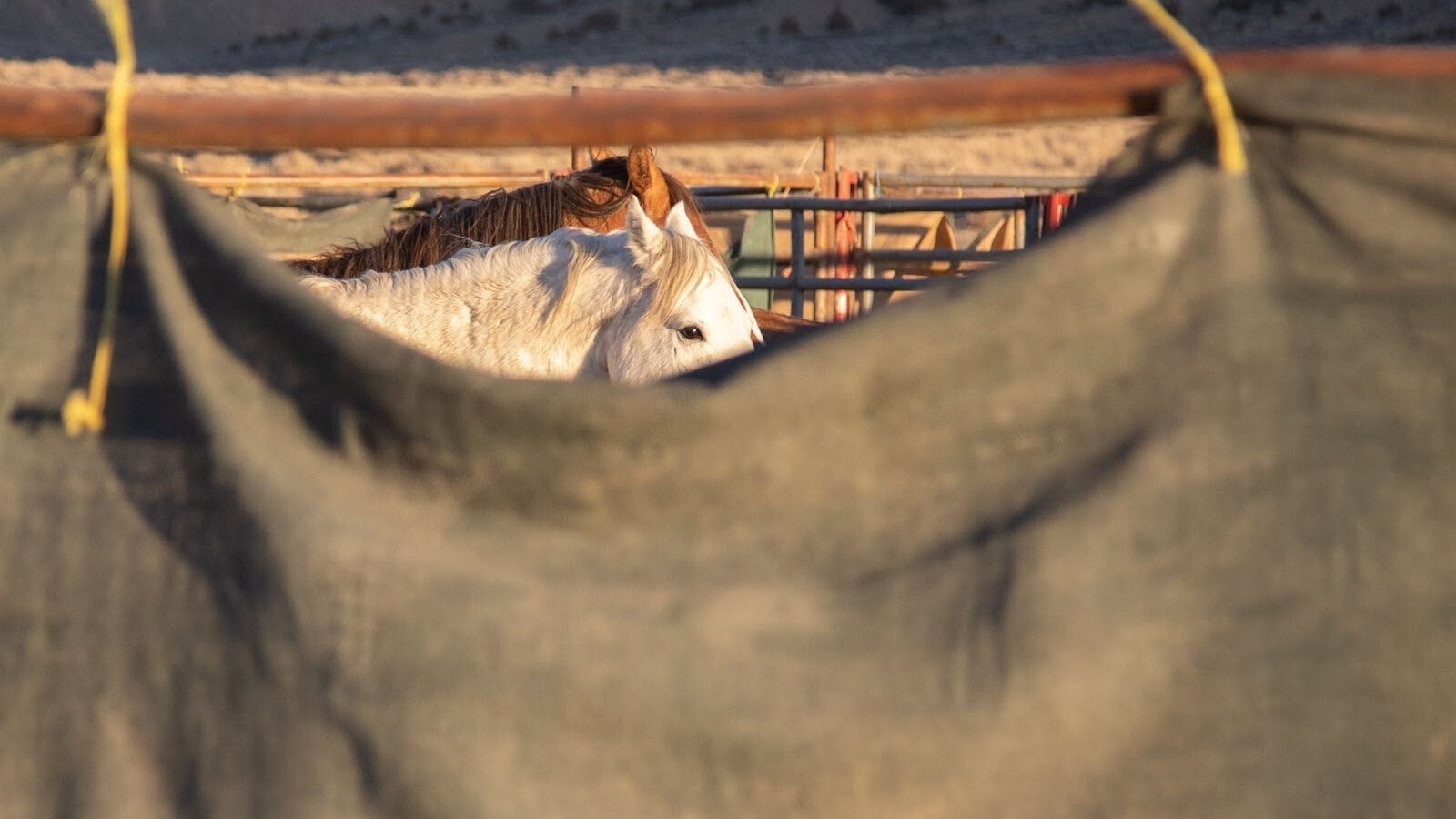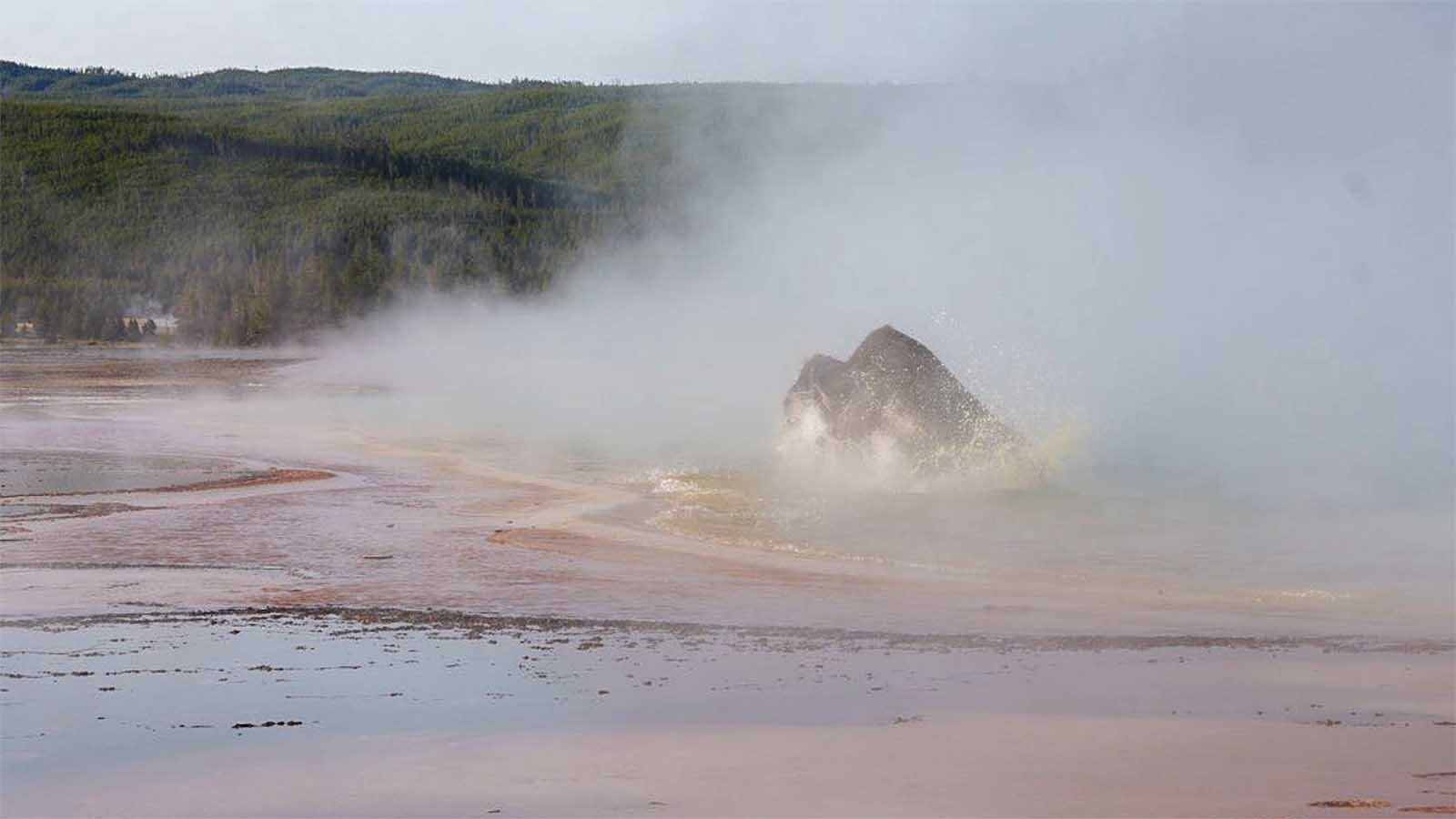The wild horse round-up that took place near Rock Springs over the last few months concluded this week, and a U.S. Bureau of Land Management spokesman called the gather an “overwhelming success.”
The BLM Rock Springs and Rawlins field offices have been removing wild horses from the Great Divide Basin, Adobe Town, Salt Wells Creek, White Mountain and Little Colorado Herd Management Areas (HMAs) in southwestern Wyoming since early October.
The gathering portion of the round-up concluded on Wednesday, with the bureau collecting 4,161 horses in total, including 1,603 stallions, 1,700 mares and 858 foals.
“We still do have some work to do with the round-up, such as cleaning up traps and treating about 80 mares with fertility control and then releasing them again,” BLM spokesman Brad Purdy told Cowboy State Daily on Thursday. “I think for our number of horses gathered, the lack of injuries and the low number of deaths, I think for BLM, this is an overwhelming success.”
The intent at the beginning of the round-up was to remove 3,500 horses in order to keep the wild horse populations within appropriate management levels, around 1,550 to 2,145 horses. The BLM in Wyoming manages 16 wild horse herd areas on nearly 5 million acres.
Although nearly 4,200 horses have been gathered, around 800 of them will ultimately be returned to the management areas. So far, around 250 horses have been treated with fertility control.
Managing wild horses at appropriate levels allows the bureau to maintain rangeland and wild horse herd health and reduce the instances of horses moving onto private land and highways.
Thirty-seven horses died during the round-up, 10 related to the gathering and 27 caused by pre-existing conditions such as a club foot.
“That number 10 really jumped out at me, because I think that shows we are really focused on safety,” Purdy said. “BLM averages about half a percent of deaths when it comes to these round-ups, and I would imagine our numbers are way below that.”
Thirty-seven deaths out of the 4,161 animals rounded up would amount to 0.9%.
However, the American Wild Horse Campaign did not have kind words to say about the end of the round-up.
“The BLM’s reckless assault on Wyoming’s wild horses was unnecessary, inhumane and a colossal waste of our tax dollars,” Suzane Roy, AWHC executive director, said. “It’s left the magnificent Red Desert landscape devoid of these majestic, federally-protected animals and feedlot pens crammed full of these formerly free-roaming animals. This is no way to manage America’s cherished wild mustangs, and it’s long past time for the BLM to stop the roundups and implement humane, scientific management with fertility control.”
Purdy said in previous interviews that the goal for the BLM is to have no animal deaths, but he also has said this is not realistic when dealing with wild animals.
He also pointed out that there were no injuries among the humans working to gather the animals, another sign that BLM puts an emphasis on safety and well-being.
Now that horses have been removed, many of them will be trained at various sites across Wyoming, including the Honor Farm, and then put up for adoption, which Purdy encouraged more people to consider.
“They’re hardy animals,” he said. “I’ve seen them do everything from competition riding to being a working horse for a rancher. If you have room in your heart and on your land, you should look into adopting one of these horses.”
Editor’s note: The original version of the story had the wrong math percentages. We have updated the story to reflect the correct numbers.





